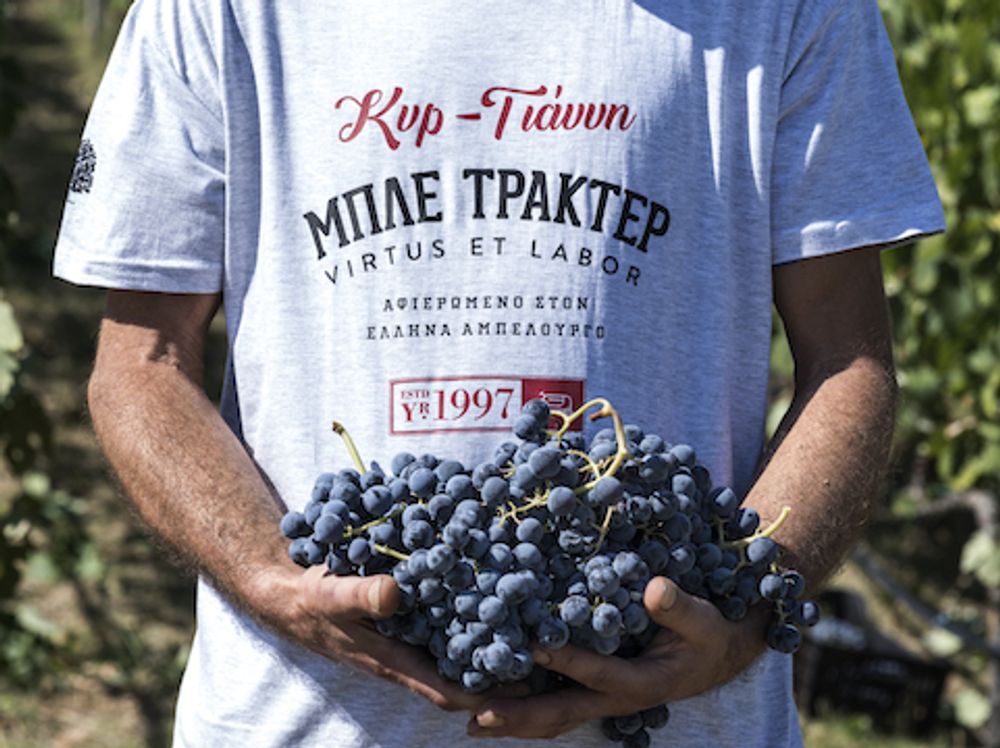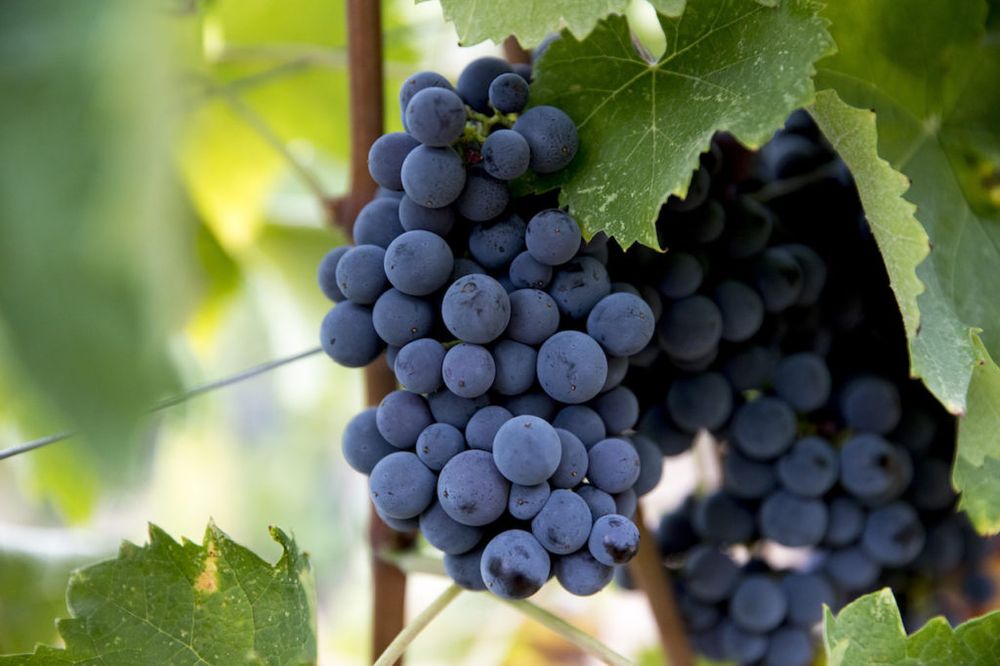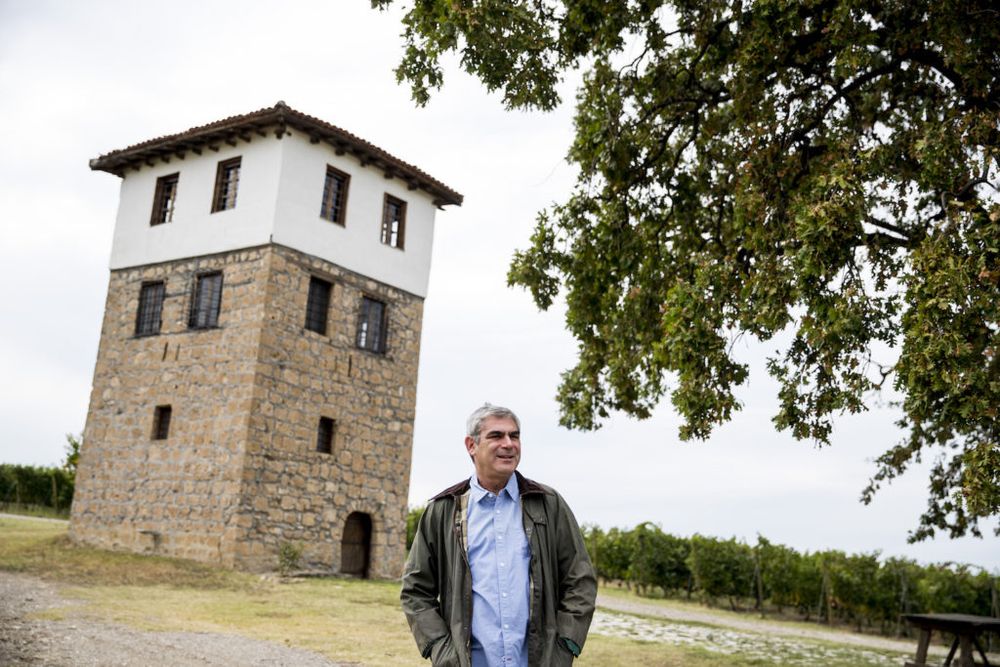If a wine is good enough for Zeus, Hera and Aphrodite, it should be good enough for anyone’s restaurant list, argues Keay.
Greece’s wine success story to date has been mainly a white wine story, led by Assyrtiko but with other varieties gradually getting wider recognition.
What about the reds?
At the London Wine Fair masterclass hosted by Yiannis Karakasis MW and Terry Kandylis, head sommelier at 67 Pall Mall, the huge qualitative steps that have been taken by producers in recent years became evident, with little of the heavy jammy-ness or over-oaking of past years evident. Increasingly, producers seem inclined to let the varietals speak for themselves.
Karakasis reckons Agiorgitiko – from the Peleponnese – is well placed to do well especially now that producers are learning not to over-oak it, which in the past has made tasting wines from this variety hard going.
The example shown, Mitravelas Agiorgitiko 2017, was a typical crowd pleaser. Made from grapes grown in clay and limestone, akin perhaps to a Tempranillo or Sangiovese but maybe even more versatile, it also lacked the sourness that the famous Chianti grape can throw up.
So what of the other red varieties? Of those shown by Karakasis and Kandylis, an Oenops Limniona 2017 from Thessaly was full and elegant, with seductively soft tannins (not unlike a Spanish Mencia) whilst the Katogi Averoff Rossiu di Munte Vlahiko 2016 was unusual, full of pepper and spice, but perhaps too far from the mainstream to appeal.

A new era has dawned for the Greek wine industry spurred mainly by the desire of younger, well-travelled producers keen to revive Greece’s classical era reputation for fine wine.
Xinomavro is leading the way as top Greek red variety
Most of the focus for Greece’s leading red variety has settled on the famed X grape, Xinomavro. Unsurprisingly the last three wines in Karakasis and Kandylis’ tasting were all of this variety – and gosh, what a variety it is, one to appeal to Nebbiolo and Pinot Noir fans, of course, but in my view the generally soft tannins and sometimes haunting flavours give this variety an appeal that could take it even further in popularity.
The three Xinomavros shown by Karakasis and Kandylis were a case in point. The Hatzivarytis Goumenissa 2016 is a blend with 30% Negoska whilst the Dougos Old Vines Rapsani 2016 is a blend of 65% Xinomavro with 30% Krassato and 5% Stavroto and spent 18 months in oak, a heftier take on the variety.
Inbetween, the Terra Petra Rapsani 2016 – shown at this tasting and stocked in the UK by The Wine Society – is a perfect example of why this variety has so much reach; again blended with Krassato and Stavroto, this Xinomavro is grown on the slopes of Mt Olympus, giving it what every wine needs: an interesting backstory. After all, if a wine is good enough for Zeus, Hera and Aphrodite, it should be good enough for anyone’s restaurant list.
“What Apostolos Thymiopoulos has done at Rapsani has been very impressive; these wines are doing very well indeed amongst our customers, particularly amongst those who normally opt for mid-weight wines like Sangiovese,” suggests Sebastian Payne of the Wine Society. He says the other Thymiopoulos Xinomavro stocked by the society – the inexpensive but zippy, red-fruit dominant Jeunes Vignes – is also doing well.
Thymiopoulos has become almost synonymous with Xinomavro. Earlier this year during Marks & Spencer’s big wine clearout, I bought several bottles of the 2016 Thymiopoulos Xinomavro which it was selling off at the inexplicably cheap price of under £7 a bottle. Made by Thymiopoulos in Naoussa, northern Greece, this is a classic single-varietal expression of Xinomavro.
Almost everyone I tried the wine on was amazed at the depth of flavour and more-ishness of the variety with even those more inclined towards heavier varieties like Shiraz or Cabernet won over by Xinomavro (the same producer also supplies Waitrose with its slightly lesser, but nonetheless appealing Xinomavro under its Atma brand, which the grocer sells for £12).

Xinomavro: in youth the wines are elegant, complex and intriguing, in maturity they develop a solid structure and balance between ripe forest fruit, dry figs and a unique earthy character.
So who is Xinomavro appealing to?
So what it is that makes Xinomavro – whose name translates roughly, as Sour or Acid Black – so appealing, even to non-Pinot lovers who normally prefer something heftier?
“Xinomavro is unique in its style and unique to the North of Greece. What makes it so compelling is that it is a little like a bastard son of Nebbiolo and Pinot Noir, and these two are responsible for some of the most sought-after and expensive wines in the world, Barolo and Burgundy, but it also represents far better value than these two classics,” says Steve Daniel, chief wine buyer at Hallgarten & Novum Wines.
Daniel says its Xinomavro produced by Alpha Estate, one of the largest but also most respected producers in Greece, has pretty much flown out of the warehouse.
“Xinomavro is proving hugely popular with Hallgarten customers. In the last year we have seen double-digit growth for all Xinomavros in our portfolio, including a 99% increase in sales of Alpha Estate Reserve Vielles Vignes Single Block Barba Yannis, Xinomavro. This strong growth is not just limited to the red wines, as we have also seen sales of Alpha Estate, Single Vineyard Rosé increase hugely in the last two years. Xinomavro, alongside Assyrtiko, are two of the Greek grapes we have really seen take off in recent years.”
Other importers are getting in on the act. This month, Berkmann Wine Cellars announced it will be listing two Thymiopoulos wines, including a Xinomavro, just weeks after adding the high end Greek wines of T-Oinos to its list.

“We will never be mainstream, however we will find our place in the wine world.” Stelio Boutaris of Kir-Yianni Estate
And Enotria & Coe has just launched Kir-Yianni, the innovative and well-regarded Naoussa-based venture established by Stelios Boutaris of the famous Greek winemaking family, into the UK market. Spearheaded by Ramnista, the flagship wine, currently on the 2015 vintage, Kir-Yianni’s main red focus is on the X grape.
“We are trying to make great wines from Xinomavro in Amyndeon and Naoussa, two very different regions though they are only 70 km apart. Soils are sandy and poor in Amyndeon, clay and rich in Naoussa. Climate is continental in Amyndeon but Mediterranean in Naoussa,” says Boutaris. He says Amyndeon wines are lighter with cherry nose, and have elegance and fragility whilst Naoussa wines are more complex, powerful, with great aging potential.
Boutaris has just toured a range of his wines around the UK with Enotria & Coe and says the Xinomavros in particular have been very well received.
“In the vineyard, Xinomavro is fragile, difficult to conquer, and requires lots of love and tenderness but make wines that are elegant, complex and intriguing! When young, they remind you of a young dancer full of energy and passion. When older, the wines are solid in structure, yet fine with a long aftertaste and special balance between ripe forest fruit, dry figs and a unique earthy character.”
Boutaris sees Xinomavro as playing a key role in the ongoing renaissance of Greek wine.
“Greek wine is still ‘exotic’. We will never be mainstream, however we will find our place in the wine world. Kir-Yianni Estate is definitely one of the leaders of this new wine renaissance and we want to build it further.”
Fortunately, Boutaris is not alone. In early July, Greece elected a new government which said a new era would dawn after years of slow recovery from the financial crisis. However a new era has clearly already dawned for the Greek wine industry, spurred in part by the crisis but mainly by the desire of younger, well-travelled producers keen to revive Greece’s classical era reputation for fine wine.
Here are six of the some of the most interesting Greek reds in the UK trade right now – five great Xinomavro and one Mavrotragano
Terra Petra, Rapsani, Thymiopoulos 2016
For me, this is the summation of everything that Xinomavro can be and should be. Great depth and maturity, given its relative youth, with rich fruit balanced by good acidity and warm supportive tannins. Great value too. (Wine Society)
Diaporos, Kir-Yianni 2016
Of the Kir-Yianni range this delicious single vineyard wine was for me the most enticing, even though it needs a few more years to show its full character. Aged for 22 months in oak barrels this is a serious Xinomavro and for me, much more appealing than Ramnista. Dark red with dark cherry and berry fruit, and good acidity, the Xinomavro is well balanced by 13% Syrah. This will age very well. Probably one of the very best high-end Xinomavro available. (Enotria & Coe)
Xinomavro Reserve, Barba Yannis, 2015
Perhaps the heftiest bottle I’ve held this year, this reserve wine – made from bush-vine grapes which date back 100 years – spent two years aging in French casks before spending another year in the bottle prior to release. Bracing acidity and soft tannins make this a delicious drink but it has great age potential too. Very good value for such quality. (Hallgarten & Novum Wines)
Akakies Rosé, Kir-Yianni, 2018
Some pink Xinomavros I have tasted just don’t work but this really does, even though its dark pink colour will annoy those who think the only good rosé is the gris colour so popular in the south of France. Quite a serious wine but lots of character. (Enotria & Coe)
And one non Xinomavro!
Mavrotragano, Hatzidakis, 2016
OK, I know the focus here is on Xinomavro but I couldn’t resist putting in a recommendation for the Hatzidakis Mavrotragano. The last vintage from the late, great winemaker Haridimos Hatzidakis who passed away in 2017 has just arrived on these shores and it is a cracker; lots of red berry fruit given extra nuance with oak aging, this red variety – from Santorini originally and here – has huge potential. It is little wonder producers elsewhere in Greece are now working with it. Snap this up whilst it is available. (Wine Society).
































